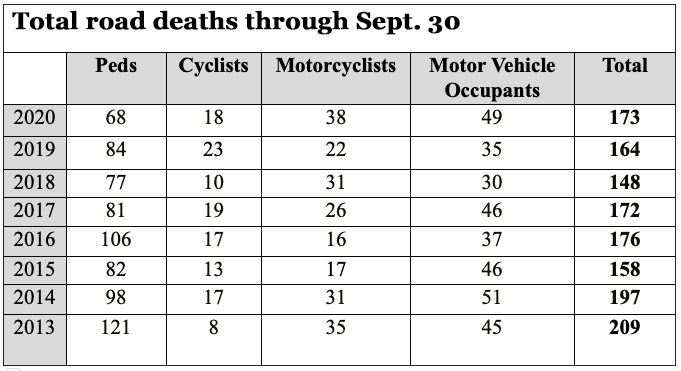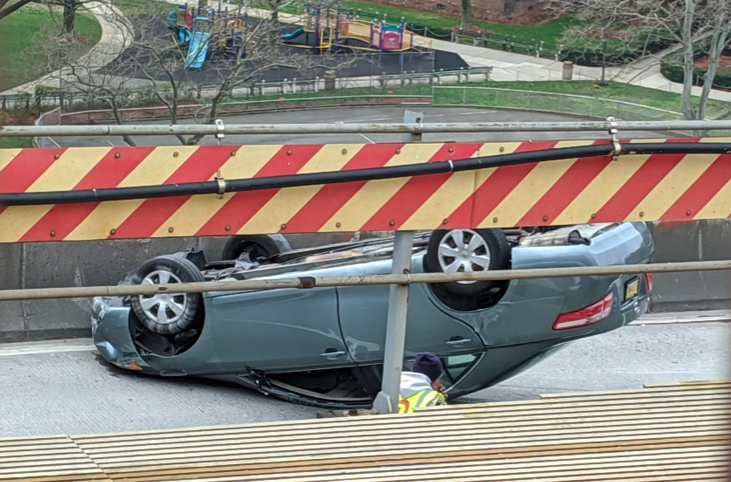The Manhattan pedestrian whose death was reported earlier this morning was just the latest victim in the bloodiest year for road violence since 2016 — the result of a shift in traffic patterns from too many cars to fewer cars being driven in a reckless manner, experts say.
According to the Department of Transportation, 173 people have died on the roads so far this year, up from 164, or 5.5 percent, even though total number of vehicle miles traveled is down significantly over the same period, thanks to reductions in driving during the COVID-19 lockdown.
During the pandemic, total driving in the city was down by high double-digit percentages. As a result, there were fewer crashes between Jan. 1 and Aug. 31 of this year compared to the previous year. Last year, there were 141,907 total crashes in the first eight months of the year, compared to 96,545 this year, a drop of 32 percent.
But the crashes have proven much more deadly because drivers are speeding excessively on the newly congestion-free roads, as Streetsblog has long reported.
The primary victims are the speeders and their passengers, as this DOT chart shows:

The findings mirror what's happening nationally. In a new report today, the National Highway Safety Administration found that roadway fatalities skyrocketed to 1.42 deaths per 100 million vehicle miles traveled in the second quarter of 2020, up from 1.08 deaths per 100,000 miles over the same period last year.
As Streetsblog USA reported, road violence experts have consistently attributed the death toll to our nation's penchant for road designs that induce drivers to speed when roadways are empty — and many roads were indeed wide open because of the pandemic.
The New York City DOT agreed, telling Streetsblog, "During the COVID crisis, there has been a higher incidence of speeding on city streets, particularly during the early months of PAUSE when roadways were clear of traffic. With speeding as a factor, the crashes that have occurred have been more deadly."
The agency said it is confident that the city's continuing rollout of school-zone speed camera systems — which are going in at a rate of 60 per month up to the legally allowable cap of 750 school zones — will be "the best deterrent to deadly speeding, as most operators who receive one ticket do not get a second one."
Tell that to this guy:
That's our report. Please get home safe.
— Streetsblog New York (@StreetsblogNYC) September 30, 2020
— with Julianne Cuba






